Praetorian Guard: Roman Elite Unit Assigned To Protect But Also Involved In Confinement, Execution, Spying And Threats
A. Sutherland - AncientPages.com - Every ruler wants his bodyguard to protect him against political opponents, people's wrath, and personal enemies.
No wonder Emperor Augustus (predecessor of Julius Cesar), strengthening his Empire, came to the same conclusion - he wanted to be protected.
Decor Fragment of an Arc de Triomphe 51-52 AD: The Emperor's Imperial Guard, The Praetorians, featured in a relief with an eagle grasping a thunderbolt through its claws, in reference, to the Roman interpretatio graeca form of Jupiter. Image credit: Jérémy-Günther-Heinz Jähnick/Wikipedia
We know that the reign of Augustus initiated an era of relative peace known as the Pax Romana. He accomplished a lot for the Empire.
He reformed the Roman system of taxation, developed networks of roads with an official courier system, established a standing army, created official police and fire-fighting services for Rome, and rebuilt much of the city during his reign.
He also decided to introduce an armed unit for his personal use.
As early as the second century BC, special units watched famous Roman leaders such as Marc Antony, Scipio Africanus, and Lucius Cornelius Sulla. Later, Julius Caesar recruited his tenth legion as personal security.
Praetorian Guard As We Know It Introduced By Augustus
However, the Praetorian Guard, as we know it, didn't appear until shortly after Augustus became Rome's first emperor in 27 BC
When Augustus decided to strengthen his authority and feel much more secure by preventing assassins from murdering him, Brutus and his companions stabbed Gaius Julius Caesar in the Roman Senate in 44 BC.
The Praetorian Guard was at first divided, three cohorts stationed close to Rome, and six more outside the capital at various imperial residences in Italy, to be deployed immediately in the event of civil unrest.
In her book "The Praetorian Guard: A History of Rome's Elite Special Forces," Sandra Bingham wrote that the Praetorians were "organized into nine cohorts of 1,000 men each [partly horse and partly foot], they initially were dispersed throughout the city and nearby areas in an attempt to avoid the appearance of having so many armed men in the capital.
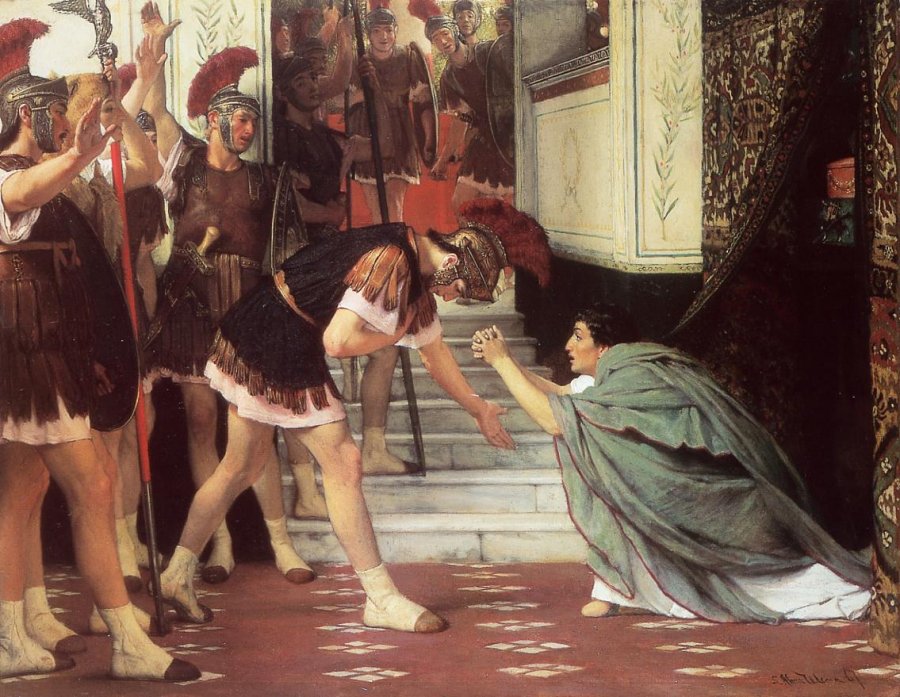
Proclaiming Claudius Emperor, by Lawrence Alma-Tadema, oil on canvas, 1867. Image credit: Lawrence Alma-Tadema (1836–1912)/Wikipedia
Since this was the first time soldiers had been stationed in Rome, Augustus was careful not to offend the citizens by clearly advertising how he had come to power and maintained his principate.
In reality, however, the Praetorians increasingly would have been visible to those in the city because of their growing involvement in its administration, and, before long, all of the cohorts were brought into the capital to facilitate the coordination of their duties."
Praetorians – Elite Unit of the perfect soldiers
The Praetorian Guard - an elite unit of soldiers - was one of the most distinctive features of Roman imperial rule. They were equipped with the latest weapons and underwent challenging training in ancient martial arts. Only the best, most deserving, and physically-trained soldiers were accepted into the Guard.
The Guard had a prestigious character and was responsible for numerous administrative duties and specialized military tasks. These men (recruited entirely from Italians) were responsible for the safety of the Roman emperor and his family and were supposed to demonstrate the ruler's power.
The Praetorians were well rewarded for their loyalty and paid more than the rest of the army. They had better working conditions, and their close contact with the emperor made them the most privileged group in the military.
Additionally, Augustus reduced their length of service by a quarter (twelve years, as opposed to the initial sixteen in the Roman legions to encourage their loyalty.
Praetorians involved in murder and intrigue
The Praetorians were the men-at-arms who protected; they were also involved in incidents linked with a murder of an emperor. As their influence grew, the Praetorians also played a crucial role in the intrigue and double-crossing that blighted imperial Rome.
They soon became the most powerful body in the state. According to ancient records, they frequently elevated or deposed emperors. Members of the Praetorians were involved in the assassination of Gaius in AD 41; they also played a significant role in the accessions of Claudius, Nero, and others.
The Praetorians also assisted firefighters in Rome and helped in security matters at the games, in theaters, at festivals, and during engineering works in the capital.
After the Praetorian Guard murdered Caligula, they significantly contributed to the imperial appointment of Tiberius Claudius Caesar at the age of fifty in 41 AD. Thus, Claudius was the first emperor raised to the throne by the Praetorian Guard.
This elite military unit existed for over 300 years; they were bodyguards of the emperors and guaranteed protection and security in Rome, but as we see, it wasn't the only role they played in the Empire. It frequently happened that the Praetorians put one of their favorites on the throne. It was a bad combination of murder and military power that one day had to end.
As Bingham writes, "perhaps the most sinister of the duties assigned to the guard was the confinement, and often the execution, of those whom the emperor considered a risk." There are numerous examples of using Praetorians to detain individuals believed to be a threat or those who had been charged and waited for a trial.
In several instances, the intimidating presence of the soldiers was enough to force the individual to commit suicide. Such an act removed the responsibility from the emperor and allowed him to claim that he would have interceded on behalf of the accused and been lenient towards him if only he had not killed himself.
" Members of the imperial family also were spied upon by those guardsmen who were assigned to them, ostensibly for protection and prestige, but who were reporting back to their superiors the conversations and events they witnessed. The Praetorians in these cases served both as a sign of honor, granted by the emperor, and as a means of control…."
At the battle of Milvian Bridge in AD 312, Constantine finally disbanded the Praetorian Guard for good. He considered the unit more dangerous than protective. In its place, he instituted the 'Scholae Palatinae,' the so-called 'palace guard,' consisting of Germans and Gauls; these men were devoted to their ruler.
Written by – A. Sutherland AncientPages.com Staff Writer
Updated on October 20, 2022
Copyright © AncientPages.com All rights reserved. This material may not be published, broadcast, rewritten or redistributed in whole or part without the express written permission of AncientPages.com
Expand for referencesReferences:
Sumner G. Roman Army Wars of the Empire
Southern P. The Roman Army
More From Ancient Pages
-
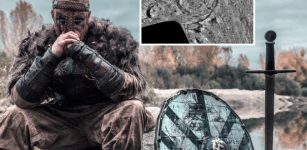 Something Never-Before-Seen Is Hidden Beneath 15 Giant Viking Burial Mounds Spotted By Radar In Norway
Archaeology | Jan 19, 2021
Something Never-Before-Seen Is Hidden Beneath 15 Giant Viking Burial Mounds Spotted By Radar In Norway
Archaeology | Jan 19, 2021 -
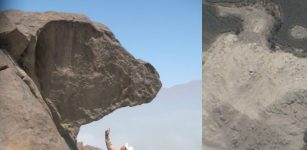 Rare Animal-Shaped Mounds Discovered In Peru
Archaeology | Apr 2, 2012
Rare Animal-Shaped Mounds Discovered In Peru
Archaeology | Apr 2, 2012 -
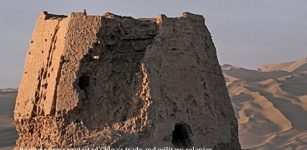 Nine Great Wall Beacon Towers Discovered In China’s Inner Mongolia
Archaeology | Apr 21, 2020
Nine Great Wall Beacon Towers Discovered In China’s Inner Mongolia
Archaeology | Apr 21, 2020 -
 Two-Story Houses With Balconies Unearthed In Ancient City Of Pompeii, Italy
Archaeology | May 18, 2018
Two-Story Houses With Balconies Unearthed In Ancient City Of Pompeii, Italy
Archaeology | May 18, 2018 -
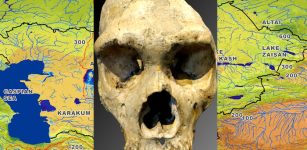 Central Asia Identified As A Key Region For Human Ancestors
Archaeology | Oct 22, 2022
Central Asia Identified As A Key Region For Human Ancestors
Archaeology | Oct 22, 2022 -
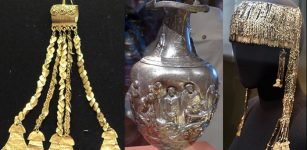 Priam’s Treasure – Authentic Trove From Homeric Troy Or Deception?
Artifacts | Jun 11, 2021
Priam’s Treasure – Authentic Trove From Homeric Troy Or Deception?
Artifacts | Jun 11, 2021 -
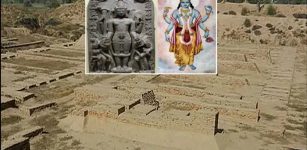 Temple Of Lord Vishnu Dated To Hindu Shahi Dynasty Unearthed In Pakistan
Archaeology | Nov 22, 2020
Temple Of Lord Vishnu Dated To Hindu Shahi Dynasty Unearthed In Pakistan
Archaeology | Nov 22, 2020 -
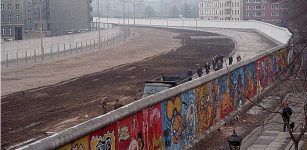 On This Day In History: Berlin Opened For One Day – On Dec 20, 1963
News | Dec 20, 2016
On This Day In History: Berlin Opened For One Day – On Dec 20, 1963
News | Dec 20, 2016 -
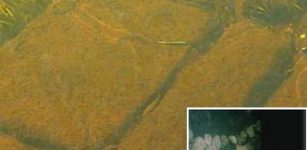 Remarkable Man-Made Underwater Structures Could Rewrite History Of Wisconsin
Featured Stories | Aug 22, 2018
Remarkable Man-Made Underwater Structures Could Rewrite History Of Wisconsin
Featured Stories | Aug 22, 2018 -
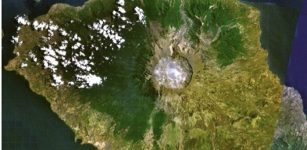 On This Day In History: Mount Tambora Volcano Begins A Three-Month-Long Eruption – On Apr 10, 1815
News | Apr 10, 2017
On This Day In History: Mount Tambora Volcano Begins A Three-Month-Long Eruption – On Apr 10, 1815
News | Apr 10, 2017 -
 Mysterious Grave Of King Valdemar IV Atterdag – Will The 600-Year-Old Historical Puzzle Ever Be Solved?
Featured Stories | Jul 14, 2018
Mysterious Grave Of King Valdemar IV Atterdag – Will The 600-Year-Old Historical Puzzle Ever Be Solved?
Featured Stories | Jul 14, 2018 -
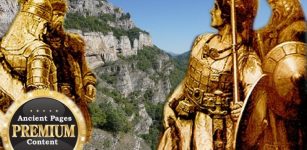 Unexplained Disappearance Of East Balkan Civilizations – Discovery Of Unusual Mini Artifacts – Part 1
Civilizations | Apr 28, 2018
Unexplained Disappearance Of East Balkan Civilizations – Discovery Of Unusual Mini Artifacts – Part 1
Civilizations | Apr 28, 2018 -
 Rare Preserved Written Account Of North America’s Ancient Lost Civilization Of Tall Beings From An Unknown Land
Featured Stories | Aug 25, 2024
Rare Preserved Written Account Of North America’s Ancient Lost Civilization Of Tall Beings From An Unknown Land
Featured Stories | Aug 25, 2024 -
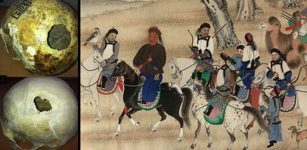 Siberia Had A Major Skull Surgery Center 2,500 Years Ago
Ancient History Facts | Jul 19, 2019
Siberia Had A Major Skull Surgery Center 2,500 Years Ago
Ancient History Facts | Jul 19, 2019 -
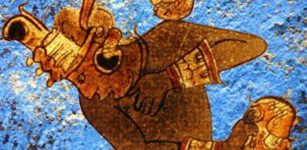 Mystery Of The Maya Blue Pigment And Its Unusual Chemical Composition
Ancient History Facts | Mar 23, 2016
Mystery Of The Maya Blue Pigment And Its Unusual Chemical Composition
Ancient History Facts | Mar 23, 2016 -
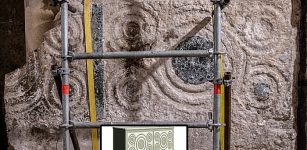 Graffiti Reveals Crusaders’ Beautiful Altar In The Church Of The Holy Sepulchre
Archaeology | Jul 24, 2024
Graffiti Reveals Crusaders’ Beautiful Altar In The Church Of The Holy Sepulchre
Archaeology | Jul 24, 2024 -
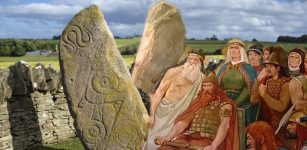 Picts: Facts And History About Mysterious People Of Northern Scotland
Civilizations | Feb 2, 2016
Picts: Facts And History About Mysterious People Of Northern Scotland
Civilizations | Feb 2, 2016 -
 Unique 8,000 Year-Old Child Burial Reveals Its Secrets
Archaeology | Nov 3, 2020
Unique 8,000 Year-Old Child Burial Reveals Its Secrets
Archaeology | Nov 3, 2020 -
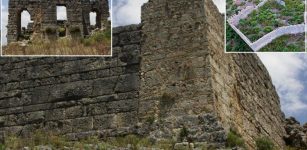 3,000-Year-Old City Of Sillyon That Alexander The Great Failed To Conquer
Archaeology | Aug 31, 2020
3,000-Year-Old City Of Sillyon That Alexander The Great Failed To Conquer
Archaeology | Aug 31, 2020 -
 Extremely Rare 2,700-Year-Old Black Stone Seal Depicting A Winged Genie Discovered In Jerusalem
Archaeology | Sep 2, 2024
Extremely Rare 2,700-Year-Old Black Stone Seal Depicting A Winged Genie Discovered In Jerusalem
Archaeology | Sep 2, 2024


